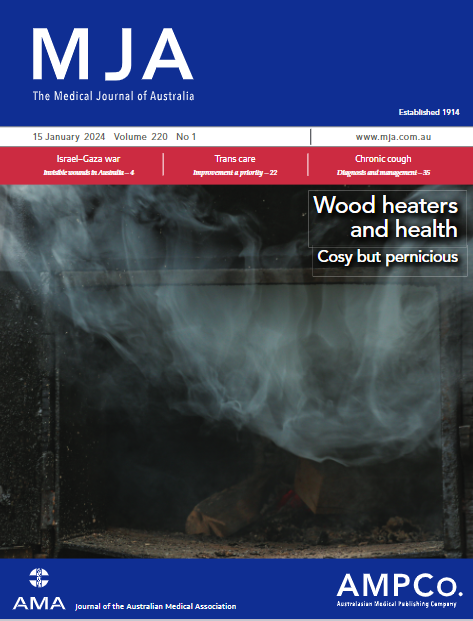Sex differences in management and outcomes of people with ST-elevation myocardial infarction, New South Wales, 2011–2020: a retrospective cohort study
Abstract
Objectives
To examine whether sex differences in cardiovascular disease care and outcomes for people hospitalised with ST-elevation myocardial infarction (STEMI) in New South Wales have declined during 2011–2020.
Study design
Retrospective cohort study; analysis of linked New South Wales Admitted Patient Data Collection and Registry of Births, Deaths and Marriages data.
Setting, participants
Adults (18 years or older) admitted to public or private hospitals in New South Wales with STEMI for the first time during 1 January 2011 – 31 December 2020.
Major outcome measures
Proportions of people who received coronary angiography or percutaneous coronary intervention (PCI) within seven days of first STEMI admission, by year and sex; proportions of STEMI admissions followed by major adverse cardiovascular events (MACE) or death (any cause) within twelve months, by year and sex; rate of change in these parameters, adjusted for age group, intensive care unit admission, and Charlson Comorbidity Index score.
Results
We identified 29 435 initial STEMI hospital admissions during 2011–2020; the mean age at admission was 66.1 years (standard deviation, 14.2 years), 8475 patients were women (28.8%) and 20 960 were men (71.2%). The proportions of female patients who underwent angiography (71.9% v 85.1%) or PCI (54.4% v 70.0%) were smaller than those of male patients. During 2011–2020, the increase in the angiography proportion was greater for female than for male patients (2.7 [95% confidence interval {CI}, 2.5–2.9] v 1.5 [95% CI, 1.4–1.6] percentage points per year), as was the change in PCI proportion (3.2 [95% CI, 2.9–3.6] v 2.5 [95% CI, 2.3–2.7] percentage points per year). The proportions of admissions followed by MACE (18.4% v 15.0%) or death of any cause (14.7% v 8.5%) were larger for female than male patients. The decline in the MACE proportion during 2011–2020 was similar for female and male patients (0.8 [95% CI, 0.5–1.1] v 0.5 [95% CI, 0.3–0.7] percentage points per year); the decline in all-cause mortality was greater for female than male patients (1.0 [95% CI, 0.8–1.1] v 0.6 [95% CI, 0.5–0.7] percentage points per year).
Conclusion
The increase in the proportions of patients with STEMI who underwent timely angiography and PCI was more rapid during 2011–2020 for female than male patients, and the decline in all-cause mortality was also greater. Sex differences in treatment and outcomes for people with STEMI are declining but will not be eliminated during the next ten years.


 求助内容:
求助内容: 应助结果提醒方式:
应助结果提醒方式:


